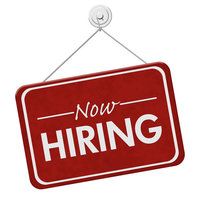Is It Time to Staff Up?
Staff are the most expensive, but also most important, part of a dental practice. So how do you know when you need a bigger team?

LeBron James may be the best basketball player on the planet, but he couldn’t bring Cleveland its first championship in decades on his own. Not even the best dentist can run a practice alone. In
, we looked at four key steps you should take to make sure your team is the right team. Now, let’s take a look at another key question: When is it time to staff up?
Take the pulse of the staff regularly.
As a people manager, you probably understand the importance of giving regular feedback to your team members. What may be a little less obvious is the need to make it a two-way feedback loop. In the classic comedy
When Harry Met Sally
, the Carrie Fisher character says, “Everyone likes to think they have good taste and a sense of humor, but they can’t possibly all have good taste and a sense of humor.”
Most dentists probably think they’re running a ship-shape, positive, finely-tuned dental team. But, frankly, you may not be. If there’s grumbling beyond the normal “woe is us” that’s endemic to nearly every workplace, talk to some of the team members about their workload. Then take some time to observe whether staff members really are at capacity.
Staffing up doesn’t have to mean adding team members.
You may have existing employees or contractors who are willing to work more hours, and you may need to consider whether having more people on might translate into better patient care.
Respect your staff by making sure they’re put in a position to succeed.
This means making sure you are “fully staffed at all times. You and your partners will have to determine what “fully staffed” means. Yes, there is a magic number of staff needed to make everything run perfectly and efficiently. Schedule too many, and you’ll be inefficient and run the risk of having staff become de-motivated. Dip just one team member below that ideal, and you run the risk of throwing everything out of whack. The phone is ringing but no one can answer it. A patient’s visit is over, but he or she needs to make another appointment and no one is at the desk at the moment. A team member looked at the break schedule wrong and now two are out at the same time, leaving patients waiting twice as long for their appointments. Communication is breaking down all over the place, and patients heading for the exit door aren’t showing their pearly whites.
Be prepared with a back-up plan if there is a call-out or an unexpected absence.
How many temporary staff shortages are caused by a last-minute call-out? Given that it happens often, why don’t you have a plan in place for when it does happen? (It
will
happen.)
Once your team is in place and running smoothly, make sure everyone is on the same page and that everyone’s first priority is the care and satisfaction of your patients. If your patients see happy, motivated, and satisfied staff, they’re more likely to reflect those same characteristics as patients.
ACTIVA BioACTIVE Bulk Flow Marks Pulpdent’s First Major Product Release in 4 Years
December 12th 2024Next-generation bulk-fill dental restorative raises the standard of care for bulk-fill procedures by providing natural remineralization support, while also overcoming current bulk-fill limitations.